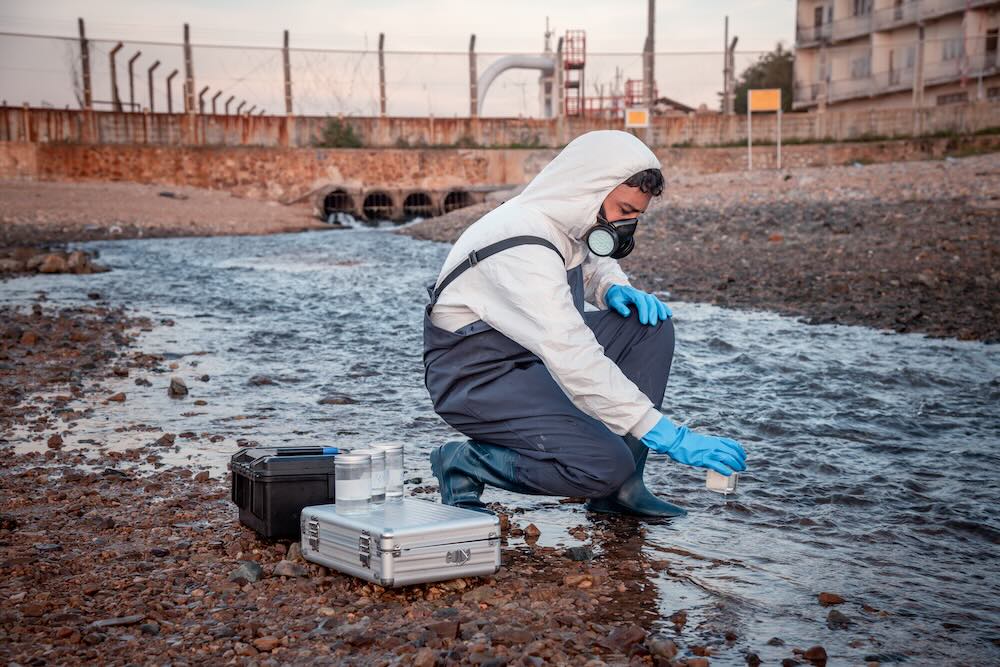EU institutions have reached a provisional agreement to update the lists of pollutants that Member States must monitor and control in surface waters and groundwater, adding substances such as more pesticides, PFAS and pharmaceuticals.
The deal, concluded on 23 September, follows almost three years of negotiations since the Commission tabled its proposal in October 2022.
Under the agreement, new environmental quality standards will apply to additional pollutants, including a sum standard for pesticides in surface waters set at 0.2 µg/l. Trifluoroacetic acid (TFA), a breakdown product of certain PFAS, will be added to the initially proposed “sum of 24 PFAS” approach for surface water, and bisphenol-A will be designated as a priority hazardous substance. Some older substances will be deselected where no longer relevant, while standards for others are tightened.
Monitoring and reporting obligations are revised. Member States will report biological quality data every three years and chemical quality data every two years (with an option for annual reporting). Effect-based monitoring will be introduced in surface waters to capture mixture toxicity; a limited, targeted use will be mandatory for estrogenic substances for a two-year period. The Commission may also set up a voluntary EU joint monitoring facility to support Member States.
The package interacts with the Water Framework Directive (WFD) in two significant ways. First, the co-legislators have codified a definition of “deterioration” consistent with Court of Justice case law. Second, two new exemptions are added: one for short-term temporary deterioration and one for cases where pollution is relocated without increasing overall loads, subject to safeguards, particularly for drinking water. Environmental groups had warned against such changes during earlier stages in Council, where the concept of allowing short-term negative impacts and deterioration following water or sediment relocation first appeared.
Timelines are extended. Member States will have until 2039 to comply with the new standards for both surface and groundwater, with a strictly conditioned possibility to delay until 2045. For substances whose standards are being tightened in surface waters, the deadline is 2033. The 20-year deadline for phasing out priority hazardous substances is maintained. Formal adoption by Parliament and Council must follow; once adopted, Member States will need to transpose the directive by 21 December 2027.
Groundwater oversight will be strengthened with a mandatory watch-list mechanism, mirroring the existing instrument for surface waters, once harmonised monitoring and evaluation standards are in place for emerging parameters such as microplastics and antimicrobial resistance genes. This was flagged in the Council’s negotiating mandate of June 2024 and carried into the final political deal.
The Commission and the EEA have repeatedly underlined the need for stronger implementation. According to River Basin Management Plan data cited by the Council, 46% of surface waters and 24% of groundwater bodies fail to achieve good chemical status. Earlier Commission and EEA assessments also found that chemical pollution remains a persistent obstacle to achieving WFD objectives.
Civil society reacted swiftly to the overnight deal. NGOs welcomed the formal recognition of pharmaceuticals and additional PFAS as priority concerns, but criticised the long compliance horizons and the introduction of new exemptions under the WFD’s non-deterioration principle. WWF, the European Environmental Bureau, PAN Europe and Health Care Without Harm argued that extended timelines risk deferring action into the 2030s and 2040s despite widespread contamination, including by PFAS residues such as TFA. They also urged that concrete measures be embedded in the forthcoming fourth cycle of River Basin Management Plans.
Why it matters now is planning. The fourth River Basin Management Plans, covering 2028–2033, must be finalised by end-2027. Authorities therefore have a narrow window to integrate the new pollutants and monitoring approaches, once the directive is adopted and transposed. The agreement’s reporting cadence — with more frequent chemical and biological data submissions, and the addition of effect-based methods — is intended to provide a clearer picture of mixture effects and to support enforcement.
Next steps are procedural but consequential. The provisional trilogue outcome goes to the Parliament and Council for endorsement, followed by formal adoption and publication. The directive will then enter into force, starting the national transposition process. Stakeholders — including water utilities, industry, agriculture and health authorities — are likely to engage heavily as Member States map monitoring networks, set up effect-based screening, and determine measures proportionate to the updated standards and deadlines.
The political balance struck is clear: an expanded, modernised pollutant list and reinforced monitoring architecture, but with extended compliance deadlines and codified exemptions under the WFD framework. The practical test will be whether Member States use the 2027 planning milestone to front-load measures — rather than postpone them to the end of the 2030s — in order to address persistent chemical pressures on Europe’s rivers, lakes and aquifers.
The Hidden Threat: TFA Contamination in European Mineral Waters


